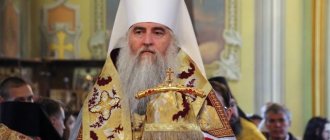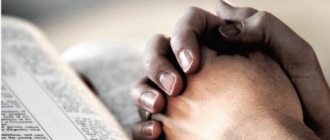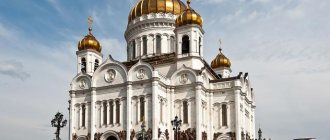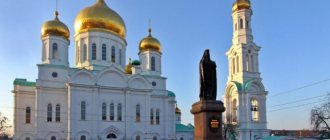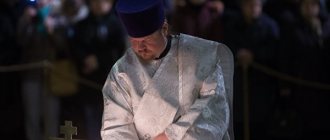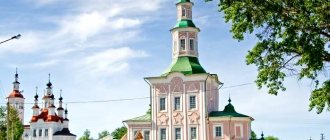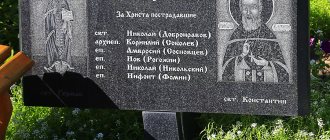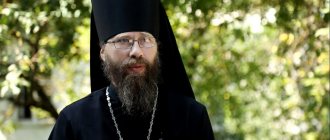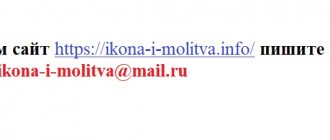| Shuya Diocese Russian Orthodox Church | |
Resurrection Cathedral (Shuya) | |
| basic information | |
| A country | Russia |
| Square | 8924 km²[1] |
| Population | 231.8 thousand people[1] |
| Metropolis | Ivanovskaya |
| Diocesan center | Shuya |
| Founded | June 7, 2012 |
| Number of parishes | 71[1] |
| Number of monasteries | 6[1] |
| Sanctification of the ruling bishop | Bishop |
| Title of the ruling bishop | Shuisky and Teikovsky |
| Website | [shuya-eparchia.blogspot.ru/ shuya-eparchia.blogspot.ru] |
| Bishop | |
| Ruling bishop | Nikon (Fomin) |
| With | July 1, 2012 |
Shuya diocese
- diocese of the Russian Orthodox Church. Unites parishes within the administrative boundaries of Gavrilovo-Posad, Ilyinsky, Komsomolsky, Lezhnevsky, Savinsky, Teikovsky, Shuisky and Yuzhsky districts of the Ivanovo region. It is part of the Ivanovo Metropolitanate[2].
Monasteries
- Nikolo-Shartomsky Monastery (male; village of Vvedenye, Shuisky district)
- Monastery in honor of the descent of the Life-giving Cross of the Lord (Pogost Krest village, Ilyinsky district)
- Assumption-Kazan Monastery (male; Kuznetsovo village, Shuisky district)
- Resurrection-Fedorovsky Monastery (male; Sergeevo village, Shuisky district)
- Holy Dormition Monastery (women; Dunilovo village, Shuisky district)
- Svyatoezerskaya Iverskaya hermitage (female; Mugreevsky village, Yuzhsky district)
- Zolotnikovskaya Pustyn (male; Teikovsky district)
Structure
Today, the boundaries of the diocese correspond to the historical ones (until 1917) and it includes 8 western and southern districts of the Ivanovo region, which coincide with the boundaries of subordinate deaneries and in general unite 74 parishes and 6 monasteries. The number of clergy is growing every year and for 2022 it is presented as follows:
- clergy - 185 people, of whom 139 are presbyters and 46 deacons;
- There are 231 monastics, of whom 83 are presbyters and 38 are deacons.
The clergy is managed by Bishop Matthew, who became a monk in 1998 and received appropriate education at the Yaroslavl School and the Ivanovo-Voznesensk Orthodox Seminary.
Shuya Bishop Matthew (Samkulov)
He was ordained to the bishopric in December 2016 and has held this post for three years now and controls the work of all diocesan commissions, including the departments for youth affairs, church charity, social service, missionary and publishing, and many others.
The work of these departments is aimed at the growth and development of the diocese, as well as attracting and strengthening people in the Orthodox faith. Active social work is carried out thanks to the Cradle Foundation, orphanages, and a temperance society, which work with donations from parishes and with their active support.
There are also independent educational institutions in the region where you can receive spiritual education:
- Boarding school at the Nikolo-Shartom monastery for men.
- Dunilovskaya women's gymnasium.
- School named after Saint Tikhon of Zadonsk in the city of Shuya.
In addition to these educational institutions, there are 20 Sunday schools in the parishes, where parents can bring their children to receive primary Orthodox education.
Links
- shuya-eparchia.blogspot.ru/ official website
other countries Argentine • Baku • Berlin • Brussels • Budapest • Vienna • Vilna • The Hague • Korsun • Sourozh Autonomous churches Chinese PC Beijing • Xinjiang • Tianjin • Harbin • Shanghai Japanese PC Kyoto • Sendai • Tokyo Self-governing churches Ukrainian PC Alexandria • Baltska • Belotserkovskaya • Berdyansk • Boryspilska • Vinnitsa • Vladimir-Volynska • Voznesenskaya • Volynska • Gorlovska • Dzhankoyska • Dnepropetrovsk • Donetsk • Zhytomyr • Zaporozhye • Ivano-Frankivsk • Izyumska • Kamenets-Podilska • Kamenska • Kyiv • Kirovograd • Konotop • Kremenchug • Krivoy Rog • Luhansk • Lviv • Mogilev-Podolsk • Mukachevo • Nizhyn • Nikolaev • Novokakhovsk • Ovruch • Odessa • Poltava • Rivne • Rovenkovsk • Romensk • Sarnensk • Severodonetsk • Simferopol • Sumy • Ternopil • Tulchin • Uman • Feodosia • Kharkov • Kherson • Khmelnitsky • Khust • Cherkasy • Chernihiv • Chernivtsi • Shepetovsk
Human Rights Center of Moldova Beltsy • Edinet • Cahul • Kishinevskaya • Tiraspol • Ungheni
Latvian PC Daugavpilsskaya • Rizhskaya Estonian Human Rights Center Narvskaya • Tallinskaya ROCOR Berlin • British • East American • Geneva • Montreal • San Francisco • Sydney • Chicago • South American Exarchates Belarusian Exarchate Bobruisk • Borisov • Brest • Vitebsk • Gomel • Grodno • Lida • Minsk • Mogilev • Molodechno • Novogrudok • Pinsk • Polotsk • Slutsk • Turov
Metropolitan districts Kazakhstani Astanaiskaya • Karaganda • Kokshetau • Kostanay • Pavlodar • Petropavlovsk • Ural • Ust-Kamenogorsk • Chimkent
Central Asian Bishkek • Dushanbe • Tashkent • Patriarchal parishes in Turkmenistan
Patriarchal parishes of the Moscow Patriarchate Italy • Canada • USA • Finland
Three ruling bishops served in the diocese in a short time
Bishop Nikon of Shuisky and Teikovsky
Bishop Nikon of Shuisky and Teikovsky (in the world - Nikolai Gennadievich Fomin) was born in 1963, into a large family raised by one mother. My father died early.
The children grew up in the faith because their mother instilled in them a love of Orthodoxy. She was so firm in her views that when she raised her children, she became the nun Seraphim.
Bishop Nikon of Shuisky and Teikovsky
For young Kolya, his mother was always an example of how to lead a righteous life.
Nikolai Gennadievich never doubted that he would connect his life with Orthodoxy, and therefore began to serve as a deacon in the Transfiguration Cathedral.
The people around him also set an excellent example of righteous living and diligent service.
Vladyka Nikon recalled:
Nikon (Fomin)
Bishop of the Russian Orthodox Church
“In 1990, I arrived at the site of the ancient shrine and saw almost nothing but ruins. Under the guidance of God, through the prayers of St. Nicholas, the first brothers and I had to become builders of churches, creators of monastic life, organizers of human souls. In the first years of the restoration of the St. Nicholas Monastery, many things seemed like a miracle - the arrival of monks, support from local authorities, the help of many pious laymen. At this time, I became convinced from experience that nothing happens without the will and help of God. The Lord guided and supported us, helped us overcome difficulties. At that difficult time, the monastics had to carry out missionary service: participate in the restoration of churches in the region, conduct educational activities and support many public endeavors. It is impossible not to give thanks to God in this field.”
Already as the governor of the restored monastery, Father Nikon graduated from two educational institutions:
- Samara Theological Seminary;
- Shuya State Pedagogical University.
Father Nikon learned a lot over the years of his ministry and with dignity accepted the position of archpastor of the Shuya diocese.
On July 15, 2016, Bishop Nikon became Metropolitan of the Astrakhan Metropolis.
Metropolitan Joseph (Makedonov)
Metropolitan Joseph (Makedonov) was born on September 11, 1964 in a working-class family, received a technical education, and then studied at the Higher Military Command School of Communications. He served in the army for some time, but resigned of his own free will and immediately began trying to get into a monastery.
Metropolitan Joseph (Makedonov). He was the acting administrator of the Shuya diocese
The efforts yielded results, in 1991 he became a hieromonk, and a year later he was already the dean of the St. John the Theologian Monastery, after which he became the abbot.
He received his education in absentia at the Moscow Theological Seminary and taught.
In 2012 he was elevated to the rank of metropolitan. While there, he was the acting administrator of the Shuya diocese (from July 15 to December 2, 2016).
Bishop Matthew (Samkulov)
Bishop Matthew (Samkulov) was born in 1951. He received a mathematical education, after which in 1996 he decided to become a monk at the Nikoloshartom Monastery. A year later he was ordained a deacon, then a priest.
Ordination of Bishop Matthew of Shuisky and Teikovsky
In 1998 he became a monk.
Received education by correspondence in the following educational institutions:
- Yaroslavl Theological School;
- St. Alekseevskaya Ivanovo-Voznesenskaya Orthodox Theological Seminary;
- Shuya State Pedagogical University.
Since 2006, he served as rector of the temple in honor of the icon of the Mother of God of All Who Sorrow (Joy of All Who Sorrow) (Ivanovo).
On December 2, 2016, he was consecrated to the rank of bishop to govern the Shuya diocese.
Excerpt characterizing the Shuya diocese
“C’est bon, vous direz tout cela au conseil de guerre, [Okay, okay, you’ll tell everything at the trial,” said the officer. And after that he turned to Pierre: “Parlez vous francais vous?” [Do you speak French?] Pierre looked around him with bloodshot eyes and did not answer. His face probably seemed very scary, because the officer said something in a whisper, and four more lancers separated from the team and stood on both sides of Pierre. – Parlez vous francais? – the officer repeated the question to him, staying away from him. – Faites venir l'interprete. [Call an interpreter.] – A small man in a Russian civilian dress emerged from behind the rows. Pierre, by his attire and speech, immediately recognized him as a Frenchman from one of the Moscow shops. “Il n'a pas l'air d'un homme du peuple, [He doesn't look like a commoner," the translator said, looking at Pierre. – Oh, oh! ca m'a bien l'air d'un des incendiaires,” the officer blurted out. – Demandez lui ce qu'il est? [Oh, oh! he looks a lot like an arsonist. Ask him who he is?] he added. - Who are you? – asked the translator. “The authorities must answer,” he said. – Je ne vous dirai pas qui je suis. Je suis votre prisonnier. Emmenez moi, [I won't tell you who I am. I am your prisoner. Take me away,” Pierre suddenly said in French. - Ah, Ah! – the officer said, frowning. - Marchons! [A! A! Well, march!] A crowd gathered around the lancers. Closest to Pierre stood a pockmarked woman with a girl; When the detour started moving, she moved forward. -Where are they taking you, my darling? - she said. - This girl, what am I going to do with this girl, if she’s not theirs! - the woman said. – Qu'est ce qu'elle veut cette femme? [What does she want?] - asked the officer. Pierre looked like he was drunk. His ecstatic state intensified even more at the sight of the girl he had saved. – Ce qu'elle dit? - he said. “Elle m'apporte ma fille que je viens de sauver des flammes,” he said. - Adieu! [What does she want? She is carrying my daughter, whom I saved from the fire. Farewell!] - and he, not knowing how this aimless lie escaped him, walked with a decisive, solemn step among the French. The French patrol was one of those that were sent by order of Duronel to various streets of Moscow to suppress looting and especially to capture the arsonists, who, according to the general opinion that emerged that day among the French of the highest ranks, were the cause of the fires. Having traveled around several streets, the patrol picked up five more suspicious Russians, one shopkeeper, two seminarians, a peasant and a servant, and several looters. But of all the suspicious people, Pierre seemed the most suspicious of all. When they were all brought to spend the night in a large house on Zubovsky Val, in which a guardhouse was established, Pierre was placed separately under strict guard. In St. Petersburg at this time, in the highest circles, with greater fervor than ever, there was a complex struggle between the parties of Rumyantsev, the French, Maria Feodorovna, the Tsarevich and others, drowned out, as always, by the trumpeting of the court drones. But calm, luxurious, concerned only with ghosts, reflections of life, St. Petersburg life went on as before; and because of the course of this life, it was necessary to make great efforts to recognize the danger and the difficult situation in which the Russian people found themselves. There were the same exits, balls, the same French theater, the same interests of the courts, the same interests of service and intrigue. Only in the highest circles were efforts made to recall the difficulty of the present situation. It was told in whispers how the two empresses acted opposite to each other in such difficult circumstances. Empress Maria Feodorovna, concerned about the welfare of the charitable and educational institutions under her jurisdiction, made an order to send all institutions to Kazan, and the things of these institutions were already packed. Empress Elizaveta Alekseevna, when asked what orders she wanted to make, with her characteristic Russian patriotism, deigned to answer that she could not make orders about state institutions, since this concerned the sovereign; about the same thing that personally depends on her, she deigned to say that she will be the last to leave St. Petersburg.
Story
The diocese got its name from the administrative center - the city of Shuya, Ivanovo region. Throughout the history of the Russian Orthodox Church, it has been the spiritual center of the Vladimir and Suzdal regions. Already since 1778, the city was the district center of the Vladimir province and the parishes in the district were directly subordinate to Metropolitan Sergius (Stragorodsky) of Vladimir.
The importance of this structural unit in the body of the Russian Orthodox Church grew during the time of the Russian Empire, and by 1916 the bishops of the city of Vladimir began to be called Shuisky. Thus, before the revolution, Shuya was the second most important city for the highest clergy.
Resurrection Cathedral in Shuya, Ivanovo region
Before the revolution, the city itself was part of the Ivanovo-Voznesensk diocese, and in 1928 a vicar’s chair was placed in Shuya, which led to the formation of an official vicariate headed by Bishop Pitirim Krylov. However, already in 1929 the department stopped its work and the vicariate ceased to exist.
Important! Only in 2012 did the Synod of the Russian Orthodox Church decide to restore the diocese of Shuiskaya, and it again began to exist as part of the new Ivanovo Metropolis. The newly formed church unit was headed by His Eminence Nikon, and in 2016 he was replaced by Matthew (Samkulov).
In total, the diocese existed for only 8 years: 1928-1929. and 2012-2019 Nevertheless, it is an important part of the body of the Russian Orthodox Church and a major spiritual center of the European part of the Russian Federation.
